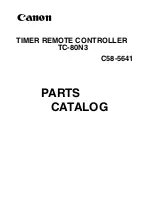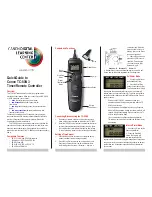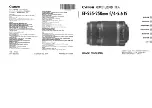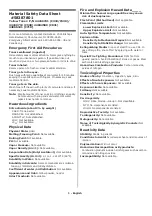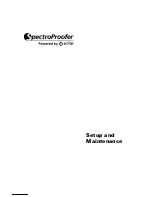
equivalent combinations. If a 230 volt
brake coil is connected as shown in
Figures 5 or 6, the motor can be operated
on either 230 volts or 460 volts with no
adverse effect on brake operation.
B. DC coils
1. All Stearns DC coils are single voltage
dual winding. A high current pull-in
winding is initially energized to start the
plunger movement, while a low current
holding winding is momentarily shunted
from the circuit until the plunger has
pulled in. The older design incorporated
a mechanical switch mounted to the
solenoid frame and actuated by an
arm mounted to the plunger to bring
the holding coil into the circuit. In
addition, coils over 48 Vdc have an arc
suppression module in parallel with the
switch contacts to protect the contacts
from arc erosion and suppress EMI.
The polarity of the incoming power
supply is immaterial with the mechanical
switch. The new electronic switch
design incorporates an electronic timing
circuit to allow the plunger to pull in,
then electrically switch to the holding
winding. Polarity of the power supply to
the electronic switch and coil must be
maintained. Refer to Figure 7 for proper
wiring.
Caution!
Never use a series resistor to
drop power supply voltage to the coil as
brake malfunction will result.
2. Due to high initial current demands of
a DC solenoid, a separate DC power
source of adequate current capacity is
usually required.
Caution!
For electrical release of brake,
apply full rated coil voltage instantly. Do
not increase voltage slowly.
III. Torque Adjustment
These series of brakes are factory set
for nominal rated static torque which is
maximum torque. Torque may be decreased
for increased stopping time, see Table 1.
The torque on the 1-1/2 lb-ft brake may not
be reduced.
Note 1:
Torque adjust screws on older
brakes are 1/4” shorter than shown in
Table 1. For replacement screws use part
number 8-009-501-00 and specify 2” length
needed or use part number 8-009-503-00
and specify 2-3/4” length needed, based on
series and torque from Table.
Note 2:
Both adjustment screws (11),
Figure 8, must be turned equal amounts
counterclockwise to decrease torque.
IV. General Maintenance
Warning!
Any mechanism or load held in
position by the brake should be secured
to prevent possible injury to personnel
or damage to equipment before any
disassembly of the brake is attempted or
before the manual release knob is operated
on the brake.
Observe all cautions listed at the beginning
of this manual before attempting to service
brake.
A. Adjustment for friction disc wear
(see Table 2 and Figure 8)
1. Manually lift solenoid plunger to maximum
travel. Depress and allow solenoid
plunger to snap out several times.
Measure solenoid air gap between
mating ground surfaces of solenoid frame
and solenoid plunger. (On vertically
mounted brakes, it will be necessary
AC Voltage Coil Connection
DC Voltage Coil Connection
Figure 4
Figure 5
Figure 6
Figure 7
*Arc suppression used for coil above 48 Vdc.
**Follow polarity for switch to operate.
Electronic Switch**
(New Style)
Mechanical Switch
(Old Style)
Class B
Class H
Table 1
Figure 8
Table 2: Air Gap Settings
–
–
9/16”
9/16”
9/16”
13/32”
1/2”
1/2”
9/16”
–
13/32”
1/2”
9/16”
9/16”
9/16”
1.5; 3
6
10
15
20; 25
57,500
55,500
55,300
55,000
55,200
55,400
Nominal Static
Torque (lb-ft)
Series
Nominal
Static Torque
(lb-ft)
Maximum
Counterclock-
wise Turns
% Torque
Reduction
per Turn
Required Torque
Adjust Screw
Length (inches)
Original
Spring Height
(inches)
55,500
1.5
2
1
55,300
55,500
3, 6 & 10
4
12
2
7/8
55,500
55,300
15
3
16
2-3/4
1-27/32
55,000
1.5
2
1-1/8
55,000
55,200
55,400
3, 6, 10 & 15
3
16
2
1
55,000
55,200
55,400
57,500
25
3
16
2-3/4
1-7/8
57,500
10
3
16
2
1
57,500
15
3
16
2
7/8
55,000
55,400
57,500
20
3
16
2-3/4
1-7/8







